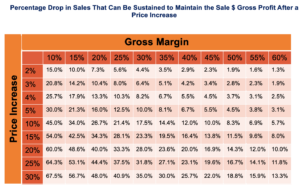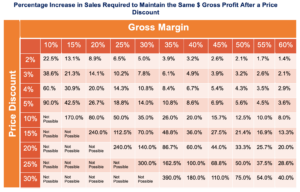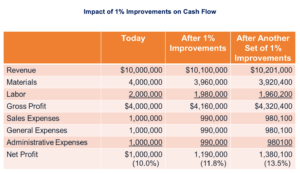
Cash flow is the lifeblood of every business. However, I’ve found many leaders do not consider how their decisions and actions affect their organization’s profitability and cash flow.
Several mistakes that negatively impact cash flow include:
Awareness, visibility, and accountability for cash flow — at the leadership level and throughout the organization — are essential. But organizations often don’t know where to begin.
Fortunately, the EOS® 8 Cash Flow Drivers™ tool exists to guide the process. It provides a practical framework for not only identifying and examining the factors that affect cash flow but also for giving individuals in the organization responsibility and accountability for initiating positive changes. By using the tool and following the process below, you can effectively increase your organization’s cash flow and strengthen its bottom line.
Keep a few things in mind as you work toward your cash flow goals.
Many business leaders don’t realize how dramatically raising prices or offering discount pricing impacts their gross profit.
You can retain your gross profit margin even when your sales drop if you’ve raised prices to offset cost increases. For example, suppose you have a gross profit margin of 30%. By raising your rates by 10%, you can sustain a 17.5% drop in sales without decreasing your gross profit margin.

If you offer price discounts, you must acquire significantly more sales to retain your gross profit margin. For instance, to maintain a gross profit margin of 30% after discounting your rates by 10%, you would need 35% more sales.

Even a slight improvement in cash flow can go a long way. A mere 1% increase in revenue and/or 1% reduction in costs can profoundly affect net profit.

A cost savings will have an exponentially greater positive impact on cash flow than an increase in sales. The example below shows a $10 million business with a 10% net profit. It would need to generate $1 million in new business to generate the same cash flow associated with a $100,000 cost savings.

Improving cash flow is a matter of embracing opportunities to boost revenue or decrease expenses.
There are always ways to improve profitability and cash flow. When someone tells me they have no control, I don’t buy it. By looking closely at your organization’s spending and pricing practices, you’ll discover opportunities for making changes.
You can approach your landlord about lowering your rent, appeal for reduced property taxes, negotiate with suppliers for more favorable pricing, or charge more for your products and services. Even slight changes to these things and others can make a tremendous difference.
If you’re stuck and need help moving your cash flow in the right direction, let’s talk — schedule a 15-minute discovery call.